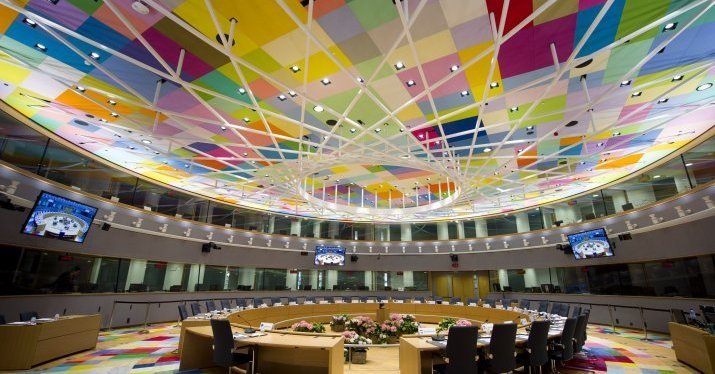During the past decade, States have given slow and sometimes even no coordinate response to crisis. In light of this fact, a certain number of stakeholders and observers believe that differentiated integration has progressively established itself as the most sensible option for the future of Europe. This approach is backed up by decision-making becoming more complex in the European Union as it has widened. This path especially seems more accessible in time because if it only involves willing States, then we could hope to reach an agreement in the course of a few years. Nevertheless, although it has been around for a few decades, it does not seem to have given a relevant or efficient answer to the numerous recent challenges caused by either the Eurozone, the Schengen area or even the Common Foreign and Security Policy (CFSP). A Union that is wider and more inclusive will take more effort and time to consolidate but will also be more democratic, powerful and will be based on simple rules for everyone. Therefore, it seems appropriate in the long run.
Between the Union and international leaders, ambition will be the key
We have to be realistic: the leadership of the “big” founding countries, especially France and Germany, is essential on the European scene. Regularly, these countries try to revive the European Union by gathering their partners around their propositions. Nonetheless, if we look at the bigger picture, we have no choice but to notice the progressive but obvious reduction of their influence compared to new international rivals. The coming decades should reinforce this tendency – including in the scenario of a Europe at 27. [1] Yet, the merger – more than the aggregation – of the 27 countries’ influence could turn Europe into one of these candidates.
To do so, we have to bet on the complementarity of member states’ comparative benefits (industry, agriculture, maritime access, defence, etc.) - which are not always valued as they should be - according to their seniority and size. It would also be a good opportunity to shift the dormant competition between European countries to the international stage, between the Union and its international rivals (USA, China, India, etc.). It is time to choose between the European microcosm, which could be harmful, and a Europe measuring up to the global leaders for the next few decades.
The time of concessions and of reciprocity
The European project can only be relaunched if most countries are convinced to join the Union. This will have a critical impact on the future of the EU and of its members. While France and Germany are complementary and have the ability to boost the European construction, the near reality – 13 of the 27 countries (namely half of them) have been members for more than 10 years – requires to leave this binary conception behind so that European interests can be represented in a fairer way.
In response, more recently integrated members states will also have to accept to make concessions in keeping with their evolution on the European scene. A couple of them have already agreed to follow this direction, especially concerning the revision of the Directive on the Posting of Workers – including Poland, although with some hesitation. [2] We are left to deepen the dialogue in the next months or years to eventually reach an ambitious agreement. This consensus has to be mutually backed by States so that Europe can turn its power into actions.
The (non-exhaustive) conditions and opportunities of an enlarged Europe
Beyond the usual arguments and far from considering an integration using force, the propositions listed below could be helpful to negotiate or strengthen some agreements between States. Firstly, the 13 newcomers in the Union (enlargements of 2004, 2007 and 2013) have to be more represented in the European institutions to justify their status and so that they feel more involved in the European project. Within the institutions’ current broaden system, the only person coming from one of these countries (Poland) is Donald Tusk, President of the European Council. [3]
Secondly, the member states must take on their status and the responsibilities that result, to find political solutions to the conflicts and crisis that are tormenting the EU today. The only institutional and legal options have indeed shown their limits in terms of legitimacy, democracy and efficiency. We cannot hide anymore behind the article 7 of the Maastricht Treaty or the status of the European Central Bank to postpone the adoption of a collective and clear political standpoint.
In the long run perspective, it would be relevant to revise deeply the Cohesion Policy as well as the programmes of European funds. It could help us cope with future challenges, take new governance methods into account and above all, it could stimulate the member states’ economic and social convergence upwards. Simultaneously, we also have to take up the challenge of increasing European citizens awareness on European history and culture, which is not an individual but a mutual heritage. National, regional and local particularities helped its emergence and existence thrive. Although we have been neglecting this aspect lately, the assertion and legitimisation of a shared European identity are one of the founding principles of a wanted common project.
More than an end in itself, a “variable geometry” Europe may be contemplated as a short/medium term means (whose relevance has yet to be proved) to adjust to difficult economic times. Though a more accessible lasting differentiated integration might be tempting, it would lead to the creation of a “gruppetto”, endlessly seeking to catch up on a reduced peloton while increasing competition. On the contrary, a convergence of the member states should be encouraged in the long term to create a collective and credible power. Rather than urging a single model that would lead to default integration or even worse a failure, we should rebalance the representation of the interests and characteristics amongst the member states. This step is essential in order to identify the convincing arguments and talking points that will help to come to an agreement towards a worthy Union. Overlapping the groups means spreading the forces. If we act too slowly, weariness will prevail over determination.



Follow the comments: |
|
